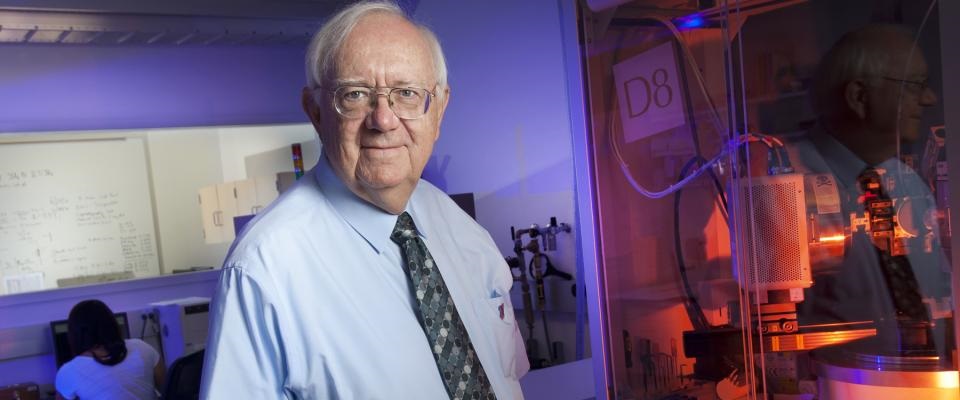Sellmyer Lab

Sellmyer Lab Pages
Current Research
The research in my group is broadly focused on quantum and spin phenomena in nanomagnetic structures. Newly discovered nanoscale structures with exceptional properties represent one of the most dynamic and exciting areas in science and technology. The emergence of nanoscience and nanotechnology has brought to the fore the concepts of deliberate fabrication of composite structures by either “bottom-up” or “top-down” methods. The top-down method has worked well for decades in the miniaturization process but is reaching its limits. The bottom-up method relies on the principle of self-assembly or self-organization, and has great potential for creating nanoscale systems that possess completely new properties. Future research likely will involve combined top-down and bottom-up approaches. Many new phenomena and devices are under study with these ideas including giant magnetoresistance sensors, high-density data storage and memory, spintronics, and exchange-coupled nanomagnets. Our research is focused on several of these areas.
Students and postdocs in my group learn and do research in a broad range of topics in materials, magnetism and nanoscience. Synthetic methods include sputtering, nanocluster deposition, self-assembly, electrodeposition, focused-ion-beam milling and others. Structural characterization methods include x-ray diffraction and transmission electron microscopy. Physical property measurements include SQUID, AGFM, and VSM magnetometry, electrical resistance, Hall effect, magnetoresistance, and Moessbauer effect. Our group is well known for fabrication of novel nanomagnetic structures and for strong integration of experiment with theory. Many of the topics under investigation in our group are basic science but related to nanomagnetic structures for future information technologies. These include: (i) High-anisotropy magnetic nanocluster-assembled films; (ii) Nanotube magnetism; (iii) Spin-logic nanostructures; (iv) Exchange-coupled nanocomposites; (v) Magnetic semiconductors for spintronics; and (vi) Quantum entanglement in nanodots.